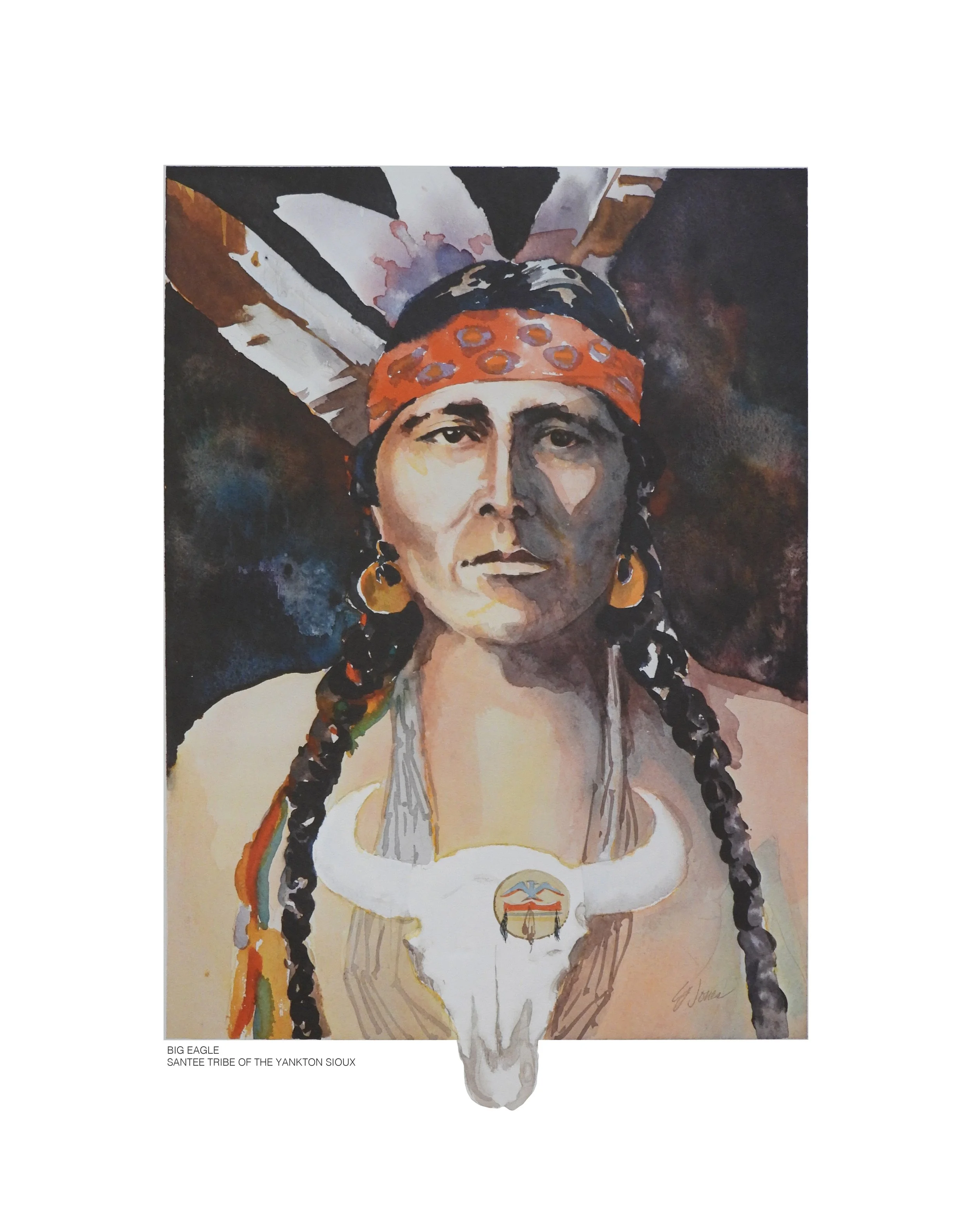Big Eagle – Santee Sioux
In the decade before the Civil War, the Santee Sioux lost nine-tenths of their land in Minnesota through deceptive treaties. Confined to a narrow strip along the Minnesota River, they struggled to survive as white settlers continued to push in from all sides. The promised annuities—payments for the lands they had been forced to cede—never arrived or were withheld by corrupt traders and government agents. By the summer of 1862, the Santee were starving. When they went to the Upper Agency to collect their supplies, they were met with contempt and told: “If they are hungry, let them eat grass or their own dung.”
The Santee had reached their breaking point. Led by Little Crow, Shakopee, Mankato, and Big Eagle, they rose in what would be their final desperate fight for survival. White settlers called it the “Minnesota Massacre,” but for the Santee it was the Santee Slaughter. By late September, their strength was broken.
A hastily convened military tribunal sentenced 303 Santee men to death and 16 to long prison terms—nearly half the adult male population of the tribe. Because of the unprecedented scale of the convictions, President Abraham Lincoln was asked to review the records. While he deliberated, 1,700 surviving Santee—mostly women and children—were forced to march to Fort Snelling. Along the way, white citizens exacted brutal revenge: they beat and clubbed the marchers, scalded them with boiling water, and in one horrifying act, ripped a baby from its mother’s arms and killed it.
Lincoln ultimately commuted most of the sentences, but ordered 39 executions—the largest mass execution in U.S. history. For the Santee, it marked the end of an era.
Big Eagle, who had surrendered rather than flee, trusted promises that the tribe would not be harmed if they laid down their arms and released their captives. Instead, he was imprisoned for three years. The remaining 1,300 Santee were forcibly removed to a reservation at Crow Creek in Dakota Territory. After the first brutal winter, fewer than 1,000 survived.
